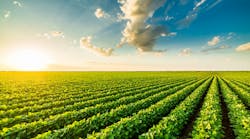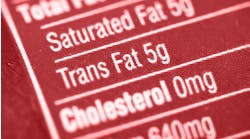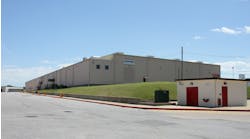Do you know what a Soyleic soybean is? Here to explain what Soyleic soybeans are and how they’re being used to create a healthier food system Bryan Stobaugh, Director Of Licensing And Commercialization at Missouri Soybeans.
During this episode, we talk about how Soyleic soybeans were discovered and what makes them non-GMO. We talk about the process of commercialization for Soyleic soybeans as well as where they can be planted.
Transcript
Food Processing: Welcome to this special bonus episode with the Food For Thought podcast. Let's jump right into it. Can you explain to me what Soyleic soybeans are?
Bryan Stobaugh: Thanks for having us on. Soyleic soybeans are a non-GMO high oleic, low linolenic soybean that can be crushed. And using that oil, after it's crushed, from the soybean as a whole seed, that oil can be used to place into many pieces of our food chain, as well as in our animal food chain.
So what is Soyleic? It is a non-GMO high oleic soybean that was discovered here in Missouri.
FP: Tell me more about how they were discovered and can you explain what makes them non-GMO?
BS: What is really cool about the organizations that do this breeding is that they're teaching the future breeders of the world. And these breeders are trained to do many things from all kinds of crops.
It was discovered by a professor in Southeast Missouri at, at one of our research locations, looking at the product and seeing that there were two parents that he can combine in a breeding aspect. And when he did that, he discovered that something changed in the amino acid profile. Amino acid is what makes up the oil or the fat that's inside that soybean. And when he took that and discovered that new change or that altered resemblance of what was already in the bean, the oleic content went up.
What makes it non-GMO? It is when it takes two plants, and you take the flower from one and you cross it to the other. You have done no change to the plant itself, besides making sure that two different versions of the soybean are combining together to make an offspring or make a new seed. As for how you make it non-GMO, that involves making the crosses right there in the field. And that's how we train our future breeders.
FP: Can you walk me through the process of commercialization?
BS: Commercialization is always the big question. This week I was in meetings and heard “We need more supply; we need more demand.” Yes. We have to have both supply and demand that drive a new product into the commercial space. The approach we took was a parallel approach of commercialization, where we are increasing supply and increasing demand based upon the number of product licenses we have out there. And we're fulfilling that goal year over year in increasing acreage year over year. Overall, we're seeing this product grow, and we're seeing groups come into this and take on licenses to commercialize. And each year it's year over year increase in acreage and year over year increase in varieties. We have about 74,600 acres in the ground for commercial use this year, which is an increase from last year in 2021’s planting season of about 36,000. We saw about a twofold increase.
FP: That's definitely a lot of acreage. Where can these beans be planted?
BS: The part that makes Soyleic unique is that it was discovered through the university breeding program at Missouri. That breeder was in Southeast Missouri. Like I explained earlier, he and others saw this as an approach through work at USDA in the genetic side and mapping the genetics and then work from United Soybean Board to put this in as many maturity groups. Maturity groups is what aligns soybean. A Maturity Group 1 soybean is going to mature faster. Maturity Group 1 is Minnesota. If you come down to Maturity Group 2, you're in the upper Midwest. You come down to Maturity Group 3, you’re hitting in the heart of Missouri all the way from east to west. Then it goes 4, 5, 6 and 7. Maturity Group 6 and 7 is the University of Georgia breeding program.
Right now, commercially we have Groups 1 all the way down to Group 7 right out there with our licensees, working on the commercialization of this, putting acres in the ground each year. And we are seeing this grow. We're seeing this move of putting more ability of high oleic acres in more maturity groups across the country.
FP: Talk to me about what leads to further use of the end-product from Soyleic soybeans
BS: The big benefit of the high oleic soybean, or what we commercialize the trademark for the commercial name Soyleic, is health. And it gives you the benefits of conventional of over conventional vegetable oils is the best way to describe that, contributing to lower blood pressure and cardiovascular health. It has a great sustainable approach. It has extended fry life, lower cost, waste, and less packaging required because it can extend the fry life used in the fryers across the country. The other thing is, is that it has a renewable source because soybeans make their own nitrogen. Soybeans also can be grown across the nation. Therefore, they are able to make some of their own energy and move forward. That fry life gives us two to three more times of overall use there's a shelf-life increase, and guess what? It gives you less absorption leading to a cleaner, lighter flavor in your fried goods.
FP: Can you describe what is being done to identify the crops grown in the U.S.?
BS: The best way to describe the growing process of identity preservation, or IP. That identity preservation gives you that ability to trace that crop from the day it was bred, the day it was grown and increased in acres, the day it was placed into a bag and then placed on a farmer's field, grown that year, sold at the end of the year, taken back and crushed giving you that high oleic oil and that non-GMO soybean meal after the crush.
So what is being done overall? Our licensees are working independently within their own system of farmers and with their own group of farmers. And they are creating these identity preservation systems that grow the seed that they are getting from our breeding programs. And they, the breeding programs can be public breeding programs. So the universities, or they can be private.
And we have private company breeding programs as well, and they are getting these lines, these varieties of high oleic soybean, and they're placing them on the farmer field and contracting that purchase back. Each one of those bags has Soyleic on there, somewhere with the patent numbers associated. So that's how you identify the crop. That's how you get the crop in the ground. That's how the farmer gets to reap the benefit of growing specialty crop on his on his farm, which equates to the ability for that farmer to gain further value from that grown acre with it being a non-GMO and high oleic soybean, which is a perk for the farmer overall. As we the world around us changes, the high oleic soybean oil is giving them that ability to diversify on their crop acres.
FP: Can you explain to me why the process took longer to bring Soyleic soybeans to the market as compared to others growing high oleic soybeans?
BS: When we look at the others that are growing high oleic soybeans, they were using technology to make those genes to be discovered. Through biotechnology, through gene edits, they were able to know exactly where and when that allele change happened to cause high oleic soybean to be expressed in the oil. So changing that amino acid, they knew in the DNA helix, exactly where it was, When we go back to our earlier question, you asked me Erin about how we look at traditional breeding, we're making that cross in the field when we're making that cross, we don't know how all the genetics are going to align.
And when we're making that first instance of how did that combination happen to change high oleic? The biotechs knew it was going to happen because they had a region in the DNA that they knew was going to change the amino acid. What happened with traditional breeding and the creation of Soyleic soybeans, was it was the ability to cross and then take that probability of what chance those two parents that made that new seed had the ability to express an increase in oleic content. Then it took several crosses – that's years of growth, year over year, one cross, one growing season is the only time you can get that one cross established. And you're crossing back to that parent that you think is giving you that new expression of high oleic. So instead of being able to pinpoint and know exactly what's happening through our processes of science, which we are grateful for, and we're grateful for our friends that work in this project area of high oleic with biotech and with gene edits, the Soyleic approach was let's go back to the basics of traditional soybean breeding, creating a non-GMO version.
And it just takes a little bit longer. Then you have to find spot that this aligns in the DNA sequence. Then you have to then breed that back into your high-yielding disease-resistant great varieties that are across many maturity groups. It just took a little bit longer. The overall process is the way we had to do it to keep the product as a non-GMO. The faster way is by using science and using biotechnology and gene edit.
We are ecstatic for them and for their work and their ways of paving the acreage increases year over year. We've seen the ability to give the consumer and the buyers that opportunity to have a non-GMO Soyleic portfolio. And that's how it was created through nontraditional conventional soybean breeding right here by students and researchers alike in Missouri.


